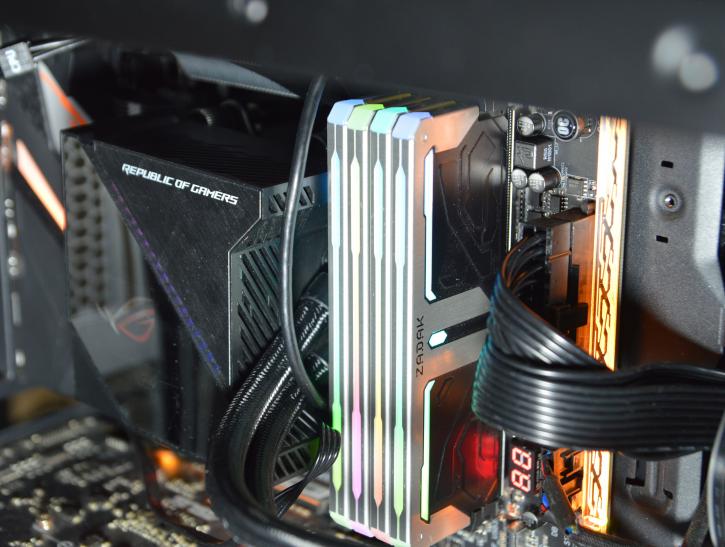Hardware and Software used
Hardware and Software used
Mainboard
- Aorus X470 Gaming 7 WIFI
Processor
- AMD Ryzen 7 3700X
Graphics Cards
- Gigabyte GeForce RTX 2080 Ti 11G
Memory
- 2x and 4x 8GB DDR4 4133 MHz Zadak Spark RGB
- Crucial Ballistix Gaming 3200 MHz 4 x 16GB
CPU cooler
- Asus Ryujin 360 (AMD system)
Power Supply Unit
- Seasonic Prime Titanium Ultra 850 W
Mass storage
- Samsung 970 Evo 1 TB, OCZ RD400 512 GB
Monitor
- AOC AG271QG up to 2560 x 1440
OS related Software
- Windows 10 (latest patches & updates installed)
- DirectX 9/10/11/12 latest End-User Runtime (Download)
- Nvidia GeForce driver latest (Download)
We ran the games at FullHD (1920 x 1080) resolution and Highest details (yes, the 2080 Ti is not a weak card). We used RTSS to measure the number of frames per second (average fps) and the minimum fps. The results presented in the graphs are the averages of the values obtained in 3 runs. We’ve tested the RAM versus game performance in the following configurations:
- 3200 MHz CL14-14-14-34
- 3200 MHz CL16-18-18-38
- 3600 MHz CL14-16-16-36
- 3600 MHz CL16-18-18-38
- 3600 MHz CL18-20-20-40
- 3733 MHz CL16-18-18-38
- 3800 MHz CL17-19-19-39
- 4000 MHz CL18-20-20-40
- 3200 MHz CL14-14-14-34
Please make note of this: In Ryzen 3000 systems, as soon as you go higher than DDR4-3733, a 2:1 multiplier kicks in, and Infinity Fabric starts working at half the memory clock’s frequency. The 2:1 multiplier switches on at DDR4-3733 (but you can set it manually to 1:1), so do keep in mind that this will affect the speed at which the various core complexes within the CPU can communicate with each other. So, for the best overall system performance/stability compromise, we normally recommend a max frequency at DDR4-3600, then againw e never have seen an issue there performance-wise either. Let’s head to the practical part then.


